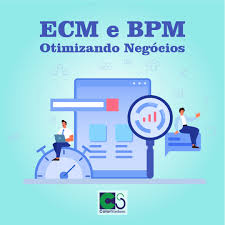ECM stands for Enterprise Content Management, while BPM stands for Business Process Management. Let’s explore each of them, along with their advantages and disadvantages:
Enterprise Content Management (ECM):
ECM refers to the strategies, tools, and technologies used to capture, manage, store, preserve, and deliver content and documents within an organization. It involves the systematic organization and control of an enterprise’s unstructured information, including documents, images, videos, emails, and other content types.
Advantages of ECM:
- Centralized Content Repository: ECM provides a centralized repository for storing and managing content, making it easily accessible to authorized users. This improves collaboration, knowledge sharing, and version control within the organization.
- Improved Document Control and Compliance: ECM systems offer features like access controls, versioning, audit trails, and retention policies, ensuring proper document control and compliance with regulatory requirements. It helps organizations maintain document integrity, security, and governance.
- Enhanced Search and Retrieval: ECM solutions often include advanced search capabilities, metadata tagging, and content indexing, enabling users to quickly search and retrieve relevant information. This improves productivity and efficiency in accessing the right content when needed.
- Streamlined Workflows and Processes: ECM systems can automate document-centric workflows, enabling organizations to define, manage, and track processes related to content creation, review, approval, and distribution. This leads to improved process efficiency and reduced manual effort.
Disadvantages of ECM:
- Implementation Complexity: Implementing an ECM system can be complex, requiring careful planning, customization, and integration with existing systems. It may involve significant investment in infrastructure, software licenses, and training.
- Change Management: Introducing ECM into an organization often requires changes in processes, workflows, and user behavior. Resistance to change and user adoption challenges can hinder successful ECM implementation.
Business Process Management (BPM):
BPM involves the systematic management and optimization of business processes within an organization. It encompasses the identification, modeling, execution, monitoring, and continuous improvement of business processes to enhance efficiency, agility, and customer satisfaction.
Advantages of BPM:
- Process Automation: BPM enables the automation of routine and repetitive tasks, reducing manual effort, eliminating errors, and improving process efficiency. It allows organizations to streamline their operations and achieve greater productivity.
- Visibility and Control: BPM provides real-time visibility into process execution, allowing organizations to monitor key performance indicators (KPIs), identify bottlenecks, and make data-driven decisions. It offers control and transparency over business processes.
- Flexibility and Agility: BPM allows organizations to model and modify business processes quickly in response to changing business requirements, market dynamics, or regulations. It provides the agility needed to adapt and optimize processes over time.
Disadvantages of BPM:
- Complexity and Learning Curve: Implementing BPM solutions can be complex, requiring process mapping, system integration, and user training. Organizations may face challenges in understanding BPM concepts and managing the learning curve associated with new BPM software.
- Organizational Resistance: BPM initiatives often require changes in roles, responsibilities, and organizational culture. Resistance to change, lack of buy-in from stakeholders, and the need for cultural transformation can hinder successful BPM implementation.
- Technology Integration: BPM systems may require integration with existing IT systems, databases, and applications. Ensuring seamless integration and data interoperability can be a challenge, especially in complex IT environments.
It’s important to note that the advantages and disadvantages of ECM and BPM can vary based on specific implementations, organizational needs, and the chosen software solutions. Organizations should carefully evaluate their requirements, conduct thorough planning, and consider the potential benefits and challenges before adopting ECM or BPM initiatives.
